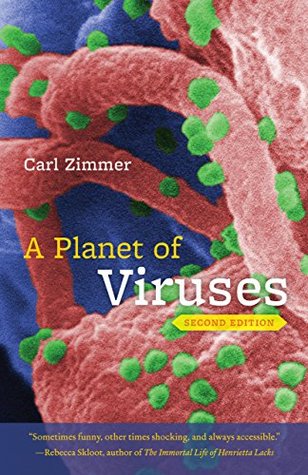More on this book
Community
Kindle Notes & Highlights
Herelle’s cures made him even more famous than before. The American writer Sinclair Lewis made Herelle’s radical research the basis of his 1925 best-selling novel Arrowsmith, which Hollywood turned into a movie in 1931.
Pharmaceutical companies abandoned Herelle’s phages and began to churn out antibiotics.
Among the children who took the sugar pill, 6.7 out of every 1,000 got dysentery. Among the children who took the phage pill, that figure dropped to 1.8 per 1,000. In other words, taking phages caused a 3.8-fold decrease in a child’s chance of getting sick. Few people outside of Georgia heard about these striking results, thanks to the secrecy of the Soviet government. Only after the Soviet Union fell in 1989 did news start to trickle out. The reports have inspired a small but dedicated group of Western scientists to investigate phage therapy and to challenge the long-entrenched reluctance in
...more
2008, James Collins, a biologist at Boston University, and Tim Lu of MIT published details of the first phage engineered to kill. Their new phage is especially effective because it’s tailored to attack the rubbery sheets that bacteria embed themselves in, known as biofilms. Biofilm can foil antibiotics and phages alike, because they can’t penetrate the tough goo and reach the bacteria inside.
Bacteria themselves carry enzymes that they use to loosen up biofilms when it’s time for them to break free and float away to colonize new habitats. Collins and Lu synthesized a gene for one of these biofilm-dissolving enzymes and inserted it into a phage.
Marine viruses are powerful because they are so infectious. They invade a new microbe host ten trillion times a second, and they kill between 15 and 40 percent of all bacteria in the world’s oceans every single day. By killing these hosts, they create swarms of new viruses. Every liter of seawater generates up to 100 billion new viruses every day—viruses
Cholera, for example, is caused by blooms of waterborne bacteria called Vibrio. But Vibrio are host to a number of phages. When the population of Vibrio explodes and causes a cholera epidemic, the phages multiply. The virus population rises so quickly that it kills Vibrio faster than the microbes can reproduce. The bacterial boom subsides, and the cholera epidemic fades away.
As a host cell manufactures new viruses, it sometimes accidentally adds some of its own genes to them. The new viruses carry the genes of their hosts as they swim through the ocean, and they insert them, along with their own, into the genomes of their new hosts.
Thanks to gene borrowing, viruses may also be directly responsible for a lot of the world’s oxygen. An abundant species of ocean bacteria, called Synechococcus, carries out about a quarter of the world’s photosynthesis. When scientists examine the DNA of Synechococcus samples, they often find proteins from viruses carrying out their light harvesting. Scientists have even found free-floating viruses with photosynthesis genes, searching for a new host to infect. By one rough calculation, 10 percent of all the photosynthesis on Earth is carried out with virus genes. Breathe ten times, and one of
...more
Darwin may have envisioned the history of life as a tree. But the history of genes, at least among the ocean’s microbes and their viruses, is more like a bustling trade network, its webs reaching back billions of years.
Each of us carries almost a hundred thousand fragments of endogenous retrovirus DNA in our genome, making up about 8 percent of our DNA. To put that figure in perspective, consider that the twenty thousand protein-coding genes in the human genome make up only 1.2 percent of our DNA.
Over 100 million years ago, an ancestral mammal was infected by an endogenous retrovirus. It harnessed the original syncytin protein, and evolved the very first placenta.
Between 1400 and 1800, smallpox killed an estimated five hundred million people every century in Europe alone. Its victims included sovereigns such as Czar Peter II of Russia, Queen Mary II of England, and Emperor Joseph I of Austria.
In theory, though, a virus might be able to gain that information and become truly alive. After all, viruses are not fixed in stone. A mutation might accidentally duplicate some of their genes, creating new copies that could take on new functions. Or a virus might accidentally take up genes from another virus, or even from a host cell. Its genome could expand until it could feed, grow, and divide on its own.


